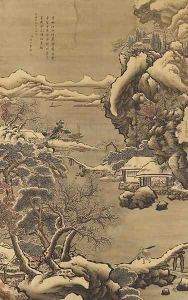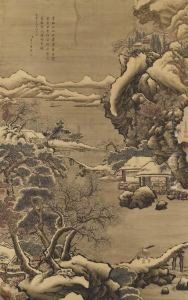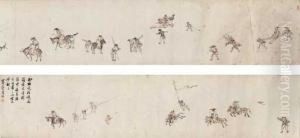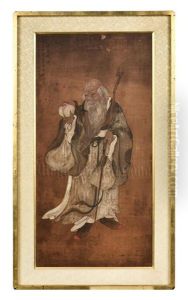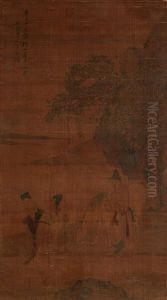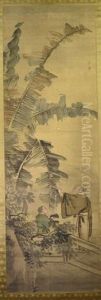Shangguan Zhou Paintings
Shangguan Zhou, also known as Shangguan Chunzhao, was a prominent painter during the Qing Dynasty in China, born in 1665 and passing away in 1749. He is celebrated for his work in the literati painting tradition, which emphasized personal expression and scholarly knowledge over the academic styles favored by the imperial court. Shangguan Zhou was known not only for his paintings but also for his calligraphy and poetry, embodying the ideal of the 'scholar-artist' prevalent during this period.
Shangguan Zhou hailed from Jiaxing in Zhejiang Province and was particularly recognized for his landscape paintings, which often showcased his deft brushwork and adept use of ink wash. His landscapes are characterized by a sense of tranquility and a refined aesthetic that reflects the literati values of simplicity and a retreat from the material world. His style was influenced by earlier masters, yet he brought his own unique approach to the genre, integrating his literary interests with his visual art.
Throughout his life, Shangguan Zhou was associated with other literati figures, engaging in the cultural practices of painting, poetry, and calligraphy as means of personal cultivation and intellectual discourse. His artworks were often accompanied by poetic inscriptions, further highlighting the interplay between visual and literary arts in his work.
While Shangguan Zhou's work may not have been as widely recognized during his lifetime as that of some official court painters, his legacy has grown over time. Today, he is appreciated for his contributions to the literati tradition and his role in shaping the artistic landscape of his era. His paintings can be found in various museum collections and continue to be studied as examples of Qing Dynasty literati aesthetics.
